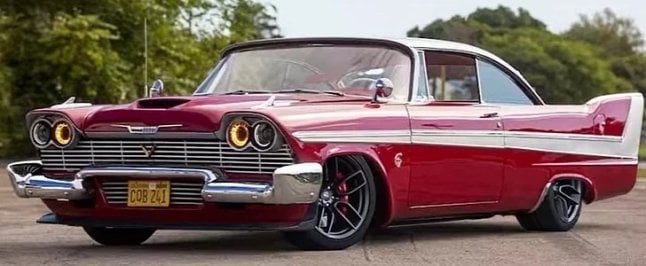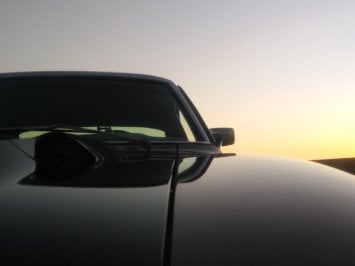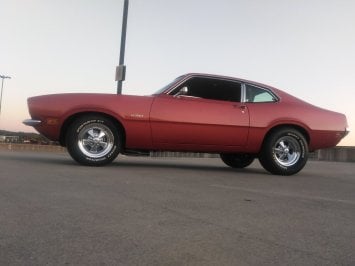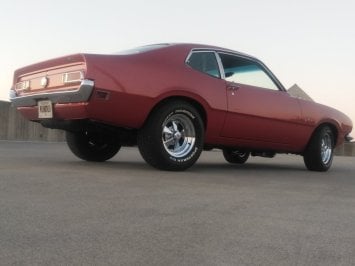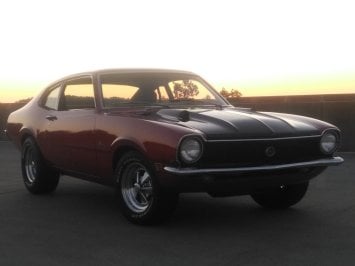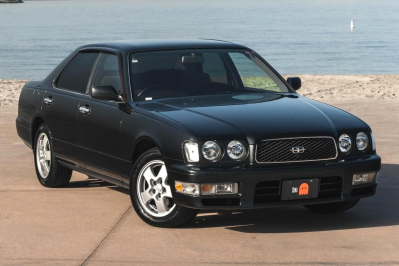Theme: Le Mans Hypercars and LMDh:
All cars are in the Gr. 1 category and will be sold in Brand Central.
Acura ARX-06 '23:
The fourth iteration of Acura's ARX-prototype series is an IMSA-exclusive LMDh race car for the next generation.
After the recent success of the Acura ARX-05 following the final years of the DPi (Daytona Prototype international) category, an heir apparent to the ARX bloodline of sports prototypes, known as the ARX-06, was developed as a race car moving forward into the new LMDh (Le Mans Daytona h) discipline which follows in the same footsteps as Le Mans Hypercars, being toe-to-toe in terms of regulations. Powering this machine is a twin-turbocharged 2.4-litre V-6 engine mated to a hybrid system, although specifications are currently unknown at this time. This is also the currently known LMDh to make a distinction of competing only in the IMSA Sportscar Championship, as Acura have no current plans to bring it to Le Mans. If they did though, one can imagine how attractive the LMDh/Hypercar category would be, especially at the starting grid. It eventually won the Rolex 24 Hours of Daytona, albeit controversially, by the Meyer Shank Racing team, but while they retained their race win, they were heavily penalized due to allegations of tire pressure data manipulation.
Alpine A480 '21:
One of the earliest Le Mans Hypercars is a repurposed LMP1 chassis in order to transition to the new race category.
The inception of the Le Mans Hypercar category saw only the likes of Toyota and Glickenhaus with their GR010 Hybrid and 007, respectively with their cars built from the ground up, but Alpine thought otherwise, by being able to use a "grandfathered" Rebellion R13 chassis and rebadging it as their own. However, because of this, the car had to be downgraded somewhat to meet Le Mans Hypercar regulations. The engine is still the same naturally aspirated 4.5-litre Gibson V-8, but with no apparent hybrid system, and that it was detuned from 670 hp to 625 hp, not to mention a weight increase from 833 kg to 900 kg to remain balanced for the new regulations. However, this remained the lightest Hypercar on the grid, and while they did not see much success in the 2021 season, they were able to beat Toyota on at least two occasions during the 2022 season, making this Hypercar a fearsome force to be reckoned with. However, Alpine are pulling out of the 2023 season to focus building a new LMDh from the ground up for 2024.

BMW Hybrid V8 '23:
BMW's first new prototype in 24 years since the Le Mans-winning V12 LMR.
Anyone would remember the BMW V12 LMR winning Le Mans back in 1999, widely considered to be one of the most chaotic runnings of the famed 24-hour race. Fast forward 24 years later, the strangely-named M Hybrid V8 was born as a competitor in the new Hypercar and LMDh category. Powering the M Hybrid V8 is an engine formerly used in the BMW M4 DTM from 2016, but fitted with twin turbochargers and a hybrid system in order to adhere to the new prototype regulations. Being a race car that will race solely on the American IMSA championships by 2023, it is also even a spiritual successor to BMW GTP from 1986, and will compete in Le Mans by 2024.
Cadillac V-LMDh '23:
Cadillac's return to global endurance racing is represented by the new V-LMDh.
LMDh is short for Le Mans Daytona h, the "h" being short for Hypercar, which is also another prototype category which this is based on. While Cadillac has been known for racing in the IMSA Sportscar Championship with the DPi-V.R for many years now, having enjoyed success in 2017, 2018 and 2021, they raced in Le Mans before with prototypes like the Northstar LMP-02. The V-LMDh symbolizes that return to Le Mans by meeting both Hypercar and LMDh regulations for 2023 and beyond, being powered by a naturally aspirated V-8 with a hybrid system to remain competitive with its rivals.
Ferrari 499P '23:
The Ferrari 499P is the Prancing Horse's first factory-backed sports prototype for Le Mans in 50 years.
The last time Ferrari competed in Le Mans with a factory-backed sports prototype was in 1972 with the 312 PB for Group 6 racing, and the unveil of the 499P is a tribute to that very car, even sharing the same red and yellow livery pattern and the number 50 as a reference to it. It is also Ferrari's first new prototype since the F333 SP, and are hoping to score their first Le Mans victory in 58 years, since their last one in 1965, before being overshadowed by Ford and numerous other manufacturers. The 499P is powered by the same V-6 twin-turbo engine as the 296 GT3, but boosted with an electric motor to maximize its performance for the Hypercar class. Rumor has it that the 499P also serves as the inspiration for the mysterious Ferrari Vision Gran Turismo as well.
Peugeot 9X8 '22:
The new Peugeot 9X8 Hypercar built together with TotalEnergies is a peculiar racing machine that features no rear wing.
Peugeot at Le Mans has seen some moderate success, such as in 1992 and 1993 with the 905 EVO 1B, and the most recent being in 2009 with the 908. After the 908 was retired, and that Peugeot has yet to return to prototype racing, they came up with an idea for a Le Mans Hypercar which was originally supposed to be in collaboration with Rebellion Racing, that is, until their parent company announced that they would fold after 2020. This left Peugeot to design the new 9X8 Hypercar (the "X" standing for all-wheel drive) in-house, and one that stands out from other Hypercars due to its lack of a rear wing, but downforce powerful enough to hold on its own, and is powered by a twin-turbocharged 2.6-litre V-6 engine mated to a hybrid system to satisfy the 939 hp total combined output. Weirdly, this car missed out on the first half of the 2022 FIA WEC season (which included Le Mans), only to compete in the latter half, where they ended up at the mid-pack at best.
Porsche 963 '23:
A prototype racing machine for Le Mans that blends Porsche's heritage and future.
When you combine the words Porsche and Le Mans together, you know it will be a match made in heaven, especially since they won the 24-hour race so flawlessly from 2015 to 2017 with their 919 Hybrid, and numerous times from the 70s, 80s and 90s that no one can seem to count anymore. The successor to the 919 Hybrid is known as the 963, and the reason for this name being that it is a machine that seeks to emulate and surpass the popularity of the 962 in the world's global endurance racing scene. An added bonus of this car is that its headlights are somewhat inspired by the Porsche Vision Gran Turismo. This car was designed as an LMDh with the help of Multimatic, and features the same engine as the 918 Hybrid, fitted with twin turbochargers and a hybrid system to meet LMDh/Hypercar regulations. Given the resurgence of sports endurance prototypes with the new LMDh and Hypercar category, the 963 looks to provide a strong showing in both the IMSA and FIA WEC.
Vanwall Vandervell LMH '23:
German racing team ByKolles has resurrected a historic brand name in preparation for their latest Hypercar.
The British manufacturer Vanwall is remembered for winning the Formula One constructors' championship in 1958. Since then, the company went on into obscurity, producing the street-legal GPR V12 sports car in the 2000's which resembled some of their old F1 cars. It was only until the collaboration with German racing team ByKolles that the brand returned to racing, with a Hypercar christened with the surname of its founder, Tony Vandervell. The car was originally supposed to compete in 2022, however, a dispute regarding the ownership of the Vanwall brand began to surface, and that the car was still being tested then. Powering the Vandervell is a naturally-aspirated V-8 mated to a hybrid system, and rumor has it that a road-going version was considered.
NOTE: There are rumors of an Isotta Fraschini Hypercar, but the car has not been revealed, at least yet.






